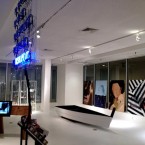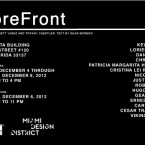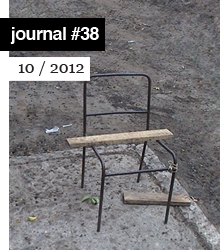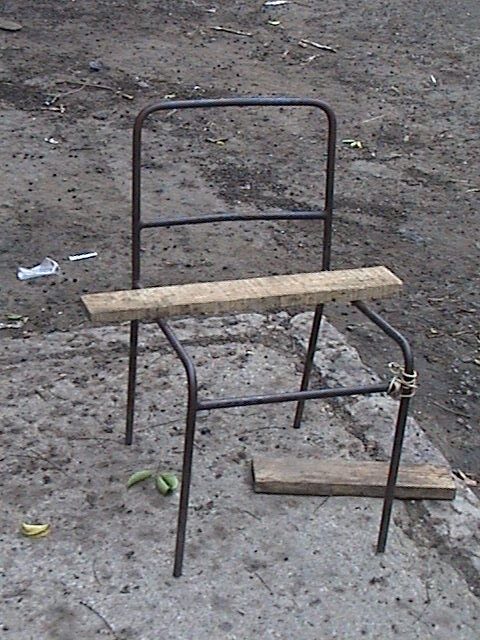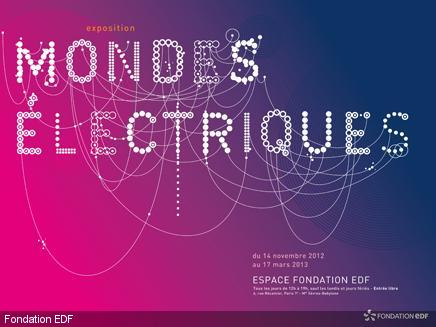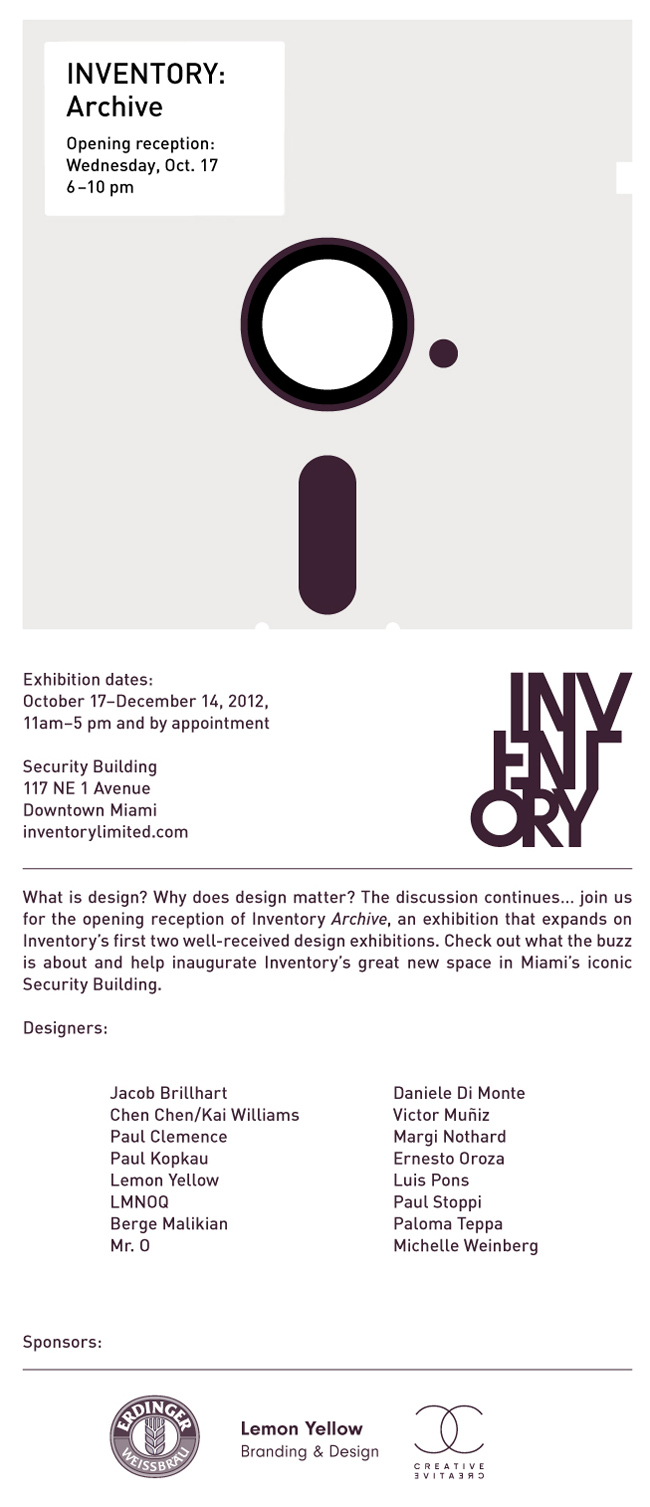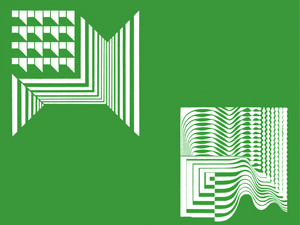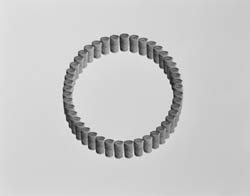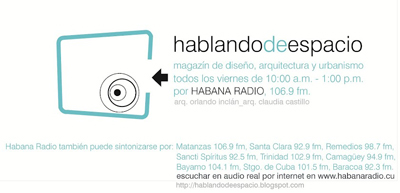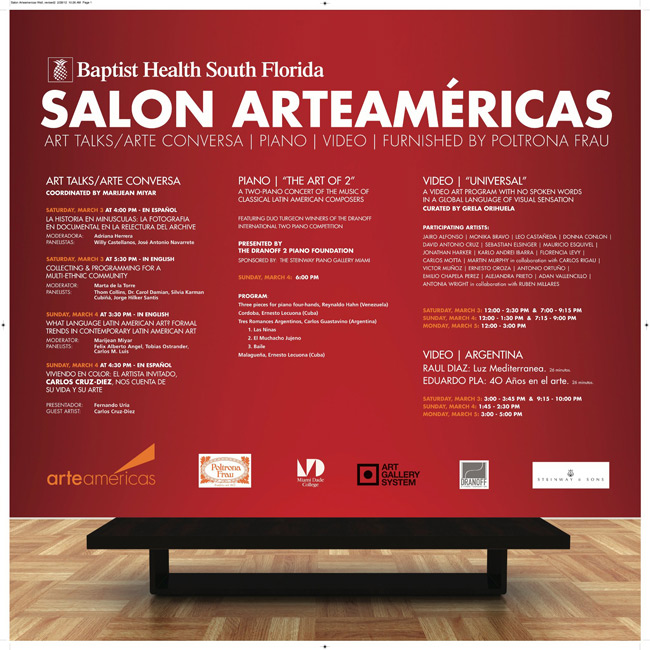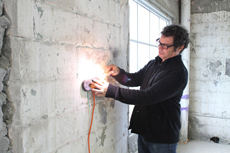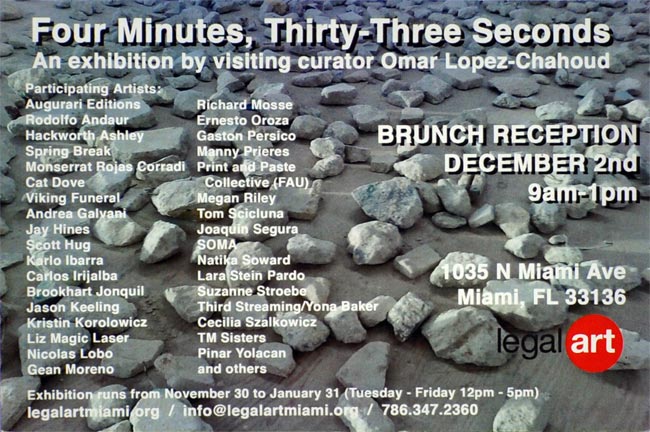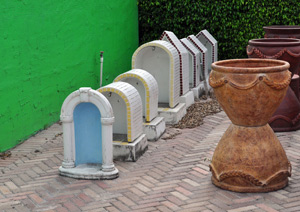The Espace Fondation EDF spotlights the so-called simplicity of electric energy through an original exhibition open to the world…
From Wednesday 14 November 2012 to Sunday 17 March 2013
Espace Fondation EDF
Curator: Alain Beltran. Directeur de recherche au CNRS
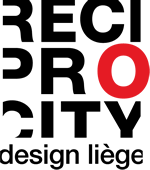
Mapping the Design World Meeting Point at Reciprocity. Curated by Max Borka
The Work of Ernesto Oroza will be highlighted at the Mapping the Design World Meeting Point at Reciprocity, the Design Biennial for Social Innovation in Liege, Belgium, from October 5 through October 28 2012, and will also feature in the accompanying MAP-Mapping the Design World magazine – focusing on some 100 examples of (Do) Good Design from an equal number of countries.
http://www.designliege.be/fr-287-mapping_the_design_world.html
CUBA/ ERNESTO OROZA AND THE CUBANS’ TECHNOLOGICAL DISOBEDIENCE/ The term Technological Disobedience was recently coined by the Cuban artist and designer Ernesto Oroza to summarize and describe the unique way in which his compatriots relate to technology: pressured and constrained by a crisis that is hitting harder and harder, and with no industry in the country, the average Cuban survives by totally disrespecting, surpassing and completely violating the “authority” and often even very complex technology of the objects that are still lingering around, thinking far beyond the capacities and uses these objects were originally meant for by their producer. Partially supported by the authorities, that even produced manuals on the subject, their audacity reaches that far that many even put their own life at risk, as is the case with the Rikimbili or improvised motorcycles. Nevertheless: scarcity has provided them with a creative richness that so-called technologically advanced countries have totally lost. And now that the crisis starts to globalize, it makes the average Cuban also much better prepared for the future – Max Borka reports.
The star ting point for Mapping was to show 100 projects from an equal number of lands, with a clear preference for those countries largely off the conventional design radar, such as Afghanistan or Zambia. Positive discrimination also determined the selection of an average of one project per country, giving the same value to inconspicuous places like the Faroe- and Lofoten Islands as to the USA, Russia and China. Finally, rather than going for the most important project in each country – reducing the innumerable emergency shelters or schools developed for third world countries – we took a more panoramic view. Although some detours took place on route, the final destination followed the initial plan, resulting in a deformed image of a topsy-turvy world that offers a life-affirming compensation for the equally distorted images we are usually confronted with.
But please: this outcome makes no claim to be representative or exhaustive. Instead, it’s a selection that suggests the endless range of strategies, and the extraordinary dynamics with which these possibilities are being exploited; an imaginativeness, enthusiasm and even joyfulness that totally refutes the cynicism, despair and dreariness that often accompanies social design. Working in diverse realms, which are often hardly connected, their order of battle is scattered: eco design, sustainable and experimental design, critical-, political- and radical design, anti-design, up cycling and recycling, re- this, re-that, re-whatever. Their goals and methods differ greatly. And yet, what binds them is stronger: a mutual striving for what in an ideal world every form of design should take as its main goal, namely the interests and well-being of society as a whole, and not just those of one particular group, let alone exclusively the interests of corporate industry. Each in its own way has also raised rebellion against the tyranny of what is proclaimed to be good design by consumer society: slick, glamorous, luxurious, or simply practical objects of desire, good-looking and highly seductive, but also lethal and perilous — ‘formes fatales’ that promise heaven, but are a one-way ticket to its antipode.
Parallel to generic design’s global explosion and implosion on a semantic level, other fundamentals are causing a worldwide crisis, which even the most hard-core cannot ignore. This ongoing turmoil plays directly to the Biennial’s theme, the relationship between design and memory: in its eternal celebration of the new, design suffers from an innate Alzheimer, wherein the logic of permanent renewal that has to guarantee a return of investment also resulted in overproduction, a programmed obsoleteness of goods, and a market that is oversaturated — the only way out: conquer new territories. Not only does this have disastrous consequences in terms of working conditions or waste, with design being an offspring from the West, but it has also wiped other cultures away entirely, erasing their memory and identity.
All along this process, the last word in the magical formula Form follows Function expanded to Finance & Fashion, Fun, Funk & Fuck, Fiction & Friction, or Fury & Fairy. Yet other F-words urgently have to be added and replace them, such as Famine, Favela, Fai-da-te, Fragility and Foco or Foquismo, the ideology that grew out of Che Guevara’s premise that a small group of dedicated people can set off a revolution based on a hit-and-run guerrilla strategy. By nature, and in opposition to the power game of corporate industry, most of the initiatives highlighted in Mapping are small to humble. What they propose may also come far too late, their effect hardly exceeding that of the proverbial drop of water on the proverbial hot plate. And yet: the power of social networking alone often raises their impact far beyond the local level, making them not unlike Edward Norton Lorenz’ butterflies, which can alter the path of a tornado in Texas by flapping their wings in Brazil. Useless as it may be in isolation, imagine what would happen if they started to do so together, and Mapping aspires to be a catalyzer that helps synchronize all that flapping.
Curator : Max Borka
Assitant : Hanne Vanhaesebrouck
Scenography :
Concept : Max Borka
Design : Johanna Dehio & Dominik Hehl / www.johannadehio.de / dominikhehl.de/
Graphic Design :
Fremdkörper (Andrea Mehlhose & Martin Wellner)
Photography : Anna Pannekoek
Practical information
VENUE:
Musée de la Vie wallonne
Espace Saint-Antoine
cour des Mineurs
4000 Liège
www.viewallonne.be
OPENING TIME:
Tuesday to Sunday : 9.30am-6pm
OPENING :
Thrusday 4 October 2012 from 6pm
Entrance :
www.designliege.be/registration (limited capacity)
Worker, build your own machinery! – ¡Obrero, construye tu maquinaria!
Available now through Textos Moire
I’m doing an appropriation of an Ernesto Guevara’s statement from 1961. I have deleted his last name as author of this phrase.
Appropriation, reinvention and repairs should be understood as tactics that propel the “technological disobedience”. Practices that the communist revolution promoted as alternatives to the country’s stalled productive sector— and become the most reliable resource for Cubans to navigate the inefficiencies of the Communist political system. Workers who had devoted their imagination and resourcefulness to keeping the revolution on its feet were then forced to employ those attributes to endure lives short on necessities.
Memorias del Oikos – La casa re-presentada
Comisarios: Aluna Curatorial Collective (Adriana Herrera y Willy Castellanos)
Centro Cultural Español de Cooperación Iberoamericana, Inc. 2009
1490 Biscayne Boulevard, Miami, FL 33132
T: 305 448 9677 | info@ccemiami.org
http://ccemiami.org/2012/08/memoria-del-oikos-la-casa-re-presentada/
Technological Disobedience at Makeshift

Illustration by Ashley Kircher.
Spanish and row version here
Technological Disobedience in Berlin
Ernesto Oroza: Provisional Space/Collaborative Design
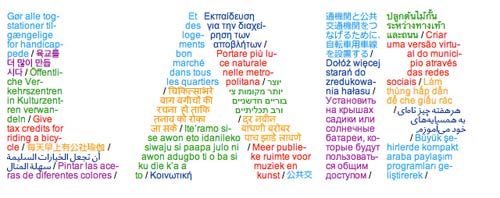

Program Information: June 15–July 5
How do we exploit the potential of a building? How can we take existing architecture and city space and produce new possibilities? In this two-day workshop, Ernesto Oroza introduces the strategies of technological disobedience and need-based architecture. Discuss and create actions to improve your city by documenting and hacking space, and help produce a printed zine. Please bring a digital camera or camera phone.
Ernesto Oroza was born in Havana, Cuba, in 1968. His work focuses on conceptual design, architecture, and theory. He was a visiting professor at Les Ateliers, Paris, in 1998, 2006, and 2010, and a professor at the Instituto Politécnico de Diseño in Havana from 1995 to 2000. Oroza received a Harpo Foundation Grant in 2010, a Cintas Fellowship in 2008, and a Guggenheim Fellowship in 2007. His publications include Editing Havana: Stories of Popular Housing (Denmark, 2011), RIKIMBILI: Une étude sur la désobéissance technologique et quelques formes de réinvention (Saint-Étienne, 2009), and Objets réinventés: La création populaire à Cuba (Paris, 2002). His work has been exhibited at the Montreal Museum of Fine Arts; The Museum of Modern Art, New York; LABoral Centro de Arte y Creación Industrial, Gijon, Spain; and the Miami Art Museum.
This program is in English with German translation.
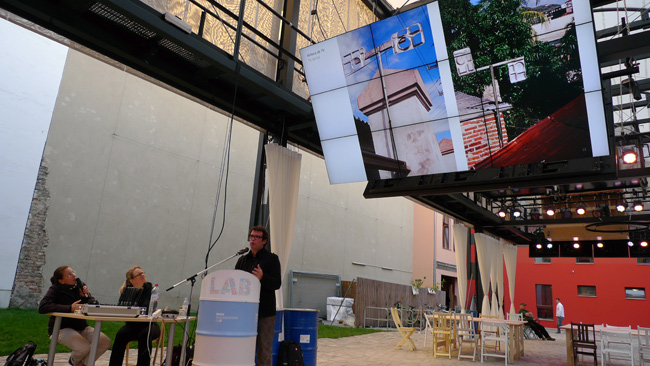
Photo by Mini Smulders
http://www.flickr.com/photos/bmwguggenheimlab/7461051728/in/photostream/
The Cuba Collection
Curated by Claudia Miyar & Liz Dimmitt
The Cuban Collection is a body of works by artists from the Caribbean nation, working on the island and abroad. This project is one that we’ve been incubating for some years and with which we feel deep personal connections. We are both from Florida families with close ties to Cuba and communities with deep Cuban roots.
Cuba is a powerful force, evoking mixed sentiments of nostalgia, mystery, longing and hope. Its art often references these complicated emotions and the island’s tumultuous history. Common threads among the artists’ work include: influences from the Spanish colonial and Afro-Cuban heritages, references to isolation and political repression, deprivation and making do with very little, a reliance on the ingenuity and spirit of the Cuban people and romanticizing the past. These themes are often addressed with exacting subtlety, imbuing the work with meaning by the artists’ efforts to communicate their truth without alarming Cuba’s strict Communist government.
With The Cuban Collection we aim to reflect the current trends coming out of the island and give voice to artists in the diaspora, while also paying homage to our own Cuban connections.
Ernesto Oroza, Franklin Alvarez Fortun, Geandy Pavon, Ibrahim Miranda, Jose Iraola, Liset Castillo, Lydia Rubio, Pablo Cano, Armando Marino, Sandra Ramos, Aluan Arguelles
The Cuba Collection
Curated by Claudia Miyar & Liz Dimmitt
The Cuban Collection is a body of works by artists from the Caribbean nation, working on the island and abroad. This project is one that we’ve been incubating for some years and with which we feel deep personal connections. We are both from Florida families with close ties to Cuba and communities with deep Cuban roots.
Cuba is a powerful force, evoking mixed sentiments of nostalgia, mystery, longing and hope. Its art often references these complicated emotions and the island’s tumultuous history. Common threads among the artists’ work include: influences from the Spanish colonial and Afro-Cuban heritages, references to isolation and political repression, deprivation and making do with very little, a reliance on the ingenuity and spirit of the Cuban people and romanticizing the past. These themes are often addressed with exacting subtlety, imbuing the work with meaning by the artists’ efforts to communicate their truth without alarming Cuba’s strict Communist government.
With The Cuban Collection we aim to reflect the current trends coming out of the island and give voice to artists in the diaspora, while also paying homage to our own Cuban connections.
Ernesto Oroza, Franklin Alvarez Fortun, Geandy Pavon, Ibrahim Miranda, Jose Iraola, Liset Castillo, Lydia Rubio, Pablo Cano, Armando Marino, Sandra Ramos, Aluan Arguelles
“Universal” A video program curated by Grela Orihuela. ARTEAMERICAS 2012
Jairo Alfonso, Monika Bravo, Leo Castañeda, Donna Conlon, David Antonio Cruz, Sebastian Elsinger, Mauricio Esquivel, Jonathan Harker, Karlo Andrei Ibarra, Florencia Levy, Carlos Motta, Martin Murphy and Carlos Rigau, Victor Muñoz, Ernesto Oroza, Antonio Ortuño, Emilio Chapela Perez, Alejandra Prieto, Adan Vallecillo, Antonia Wright and Ruben Millares
Art in America
Performance Beyond Miami’s Parties
by Paul David Young 12/06/11
“Four minutes, thirty-three seconds”
Curated by Omar Lopez-Chahoud
LegalArt, Miami.
FOR IMMEDIATE RELEASE
LegalArt
1035 N Miami Ave
Miami, FL 33136
Contact: Dominique Breard
info@legalartmiami.org
786-347-2360
legalartmiami.org
“FOUR MINUTES, THIRTY-THREE SECONDS”, CURATED BY OMAR LOPEZ-CHAHOUD
Brunch Reception: December 2nd, 2011 9am- 1pm
Exhibition runs from November 30th to January 31st (Tuesday – Friday 12pm – 5pm)
LegalArt is proud to present “Four Minutes, Thirty-Three Seconds” an exhibition by visiting curator Omar Lopez-Chahoud inspired by the 1960’s Fluxus Movement. This exhibition will take place on the 2nd and 4th floor of LegalArt, with a reception on December 2nd from 9am to 1pm at the time of LegalArt’s “Art Basel Collector’s Brunch”.
“Four Minutes, Thirty-Three Seconds” revisits the liberated attitude towards the creative process that defines the Fluxus movement. This project coincides with significant exhibitions happening at MOMA, NY; the Grey Art Gallery; NYU and at the Storefront for Art and Architecture, in collaboration with Performa 2011. This leads us to reflect on the similar attitudes between Fluxus actionists and a younger generation of artists as well as the socio-economic context in which these responses arise.
The title of this exhibition makes reference to a piece by composer John Cage, a notable influence on the Fluxus work of Lithuanian-born artist George Maciunas. Maciunas (1931-1978) organized the first Fluxus event in 1961 at the AG Gallery in New York City and the first Fluxus festivals in Europe. The Fluxus art movement in the 1960’s and 1970’s was characterized by a strongly Dadaist attitude, promoting artistic experimentation mixed with social and political activism. Often celebrated anarchistic change, Fluxus members avoided any limiting art theories and spurned pure aesthetic objectives. Their activities resulted in events or situations often called Aktions (works challenging the definition of art) and included performances, guerilla or street theater and concerts of electronic music, many of them similar to what in America were known as Happenings.
In the spirit of the Fluxus tradition, Omar Lopez-Chahoud has invited local and international artists, collaboratives, situationists, and curators to present projects in the form of publications, events, discussions, performances, situations, and other actions. These groups and individuals will activate the space in a way similar to the Happenings of the Fluxus Movement, inspired by an anti-art and anti-consumer enthusiasm. Participants in this exhibition include: Augurari Editions, Rodolfo Andaur, Hackworth Ashley, Spring Break, Monserrat Rojas Corradi, Cat Dove, Viking Funeral, Andrea Galvani, Jay Hines, Scott Hug, Karlo Ibarra, Carlos Irijalba, Brookhart Jonquil, Jason Keeling, Kristin Korolowicz, Liz Magic Laser, Nicolas Lobo, Gean Moreno, Richard Mosse, Ernesto Oroza, Gaston Persico, Manny Prieres, Print and Paste Collective (FAU), Megan Riley, Tom Scicluna, Joaquin Segura, SOMA, Natika Soward, Lara Stein Pardo, Suzanne Stroebe, Third Streaming/Yona Baker, Cecilia Szalkowicz, TM Sisters, Pinar Yolacan and others.
Omar Lopez-Chahoud has made use of his LegalArt residency as a lab for ideas, strategies and questions that organically shape the content of this exhibition. This project, like Cage’s composition, creates a potential space for creative energy and responses, facilitating a fertile dialog with the community outside of the traditional gallery venue. Publications produced by artists, curators, and art organizations will be available for research on the second floor of LegalArt. The exhibition continues on the fourth floor with multimedia installations and performances.
On December 2nd a series of panel discussions, performances and open studios will be taking place. See schedule below.
Second Floor:
11:00am Ernesto Oroza: “Architecture of Necessity” The panelist talks about how Cubans intervene in architecture out of necessity and everyday survival in Cuba.
12:00pm Rodolfo Andaur: “Local Reality as Memory Desertification, Contemporary Art in the North of Chile” The Chilean curator talks about the political and geographical impact of art in the North of Chile.
Third Floor:
9:00am – 1:00pm Art Basel Brunch Reception
9:00am – 1:00pm Open Residency Studios: Viking Funeral, Pachi Giustinian, Jiae Hwang, Brookhart Jonquil, Manny Prieres and TM Sisters
Fourth Floor:
Performance schedule TBA
read Art in America review
Critical Strategies of Post-Utopian Cuban Art (Cuba-United States). Curated by Adriana Herrera
Houston Fine Art Fair, Sept. 15 – 18, 2011.
The exhibition—featuring Consuelo Castañeda, Rubén Torres Llorca, Glexis Novoa, Ernesto Oroza and Gladys Triana—includes pieces (or re-mades) belonging to the period in which they lived on the island, and challenged the hegemonic system, along with artworks that are particularly strong in the production of a critical—and political, in a more general sense—vision of the United States. The exhibition is curated by Adriana Herrera, Miami-based independent curator and critical writer, and sponsored by Hardcore Contemporary Art Space, located in booth 602.
